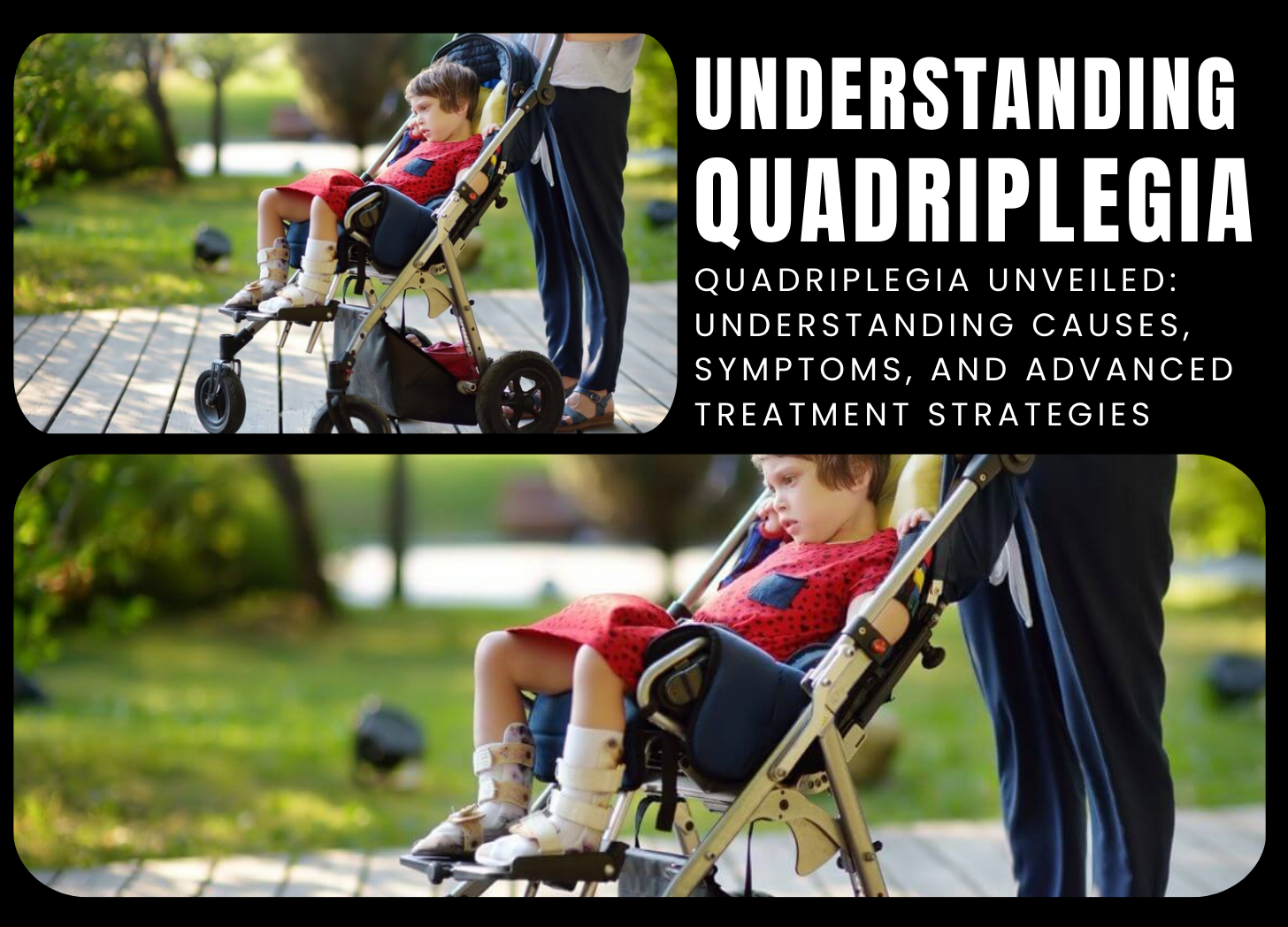Contact Us
Contact Us

Quadriplegia, sometimes known as tetraplegia, is a disorder in which all four limbs and, in most cases, the trunk are paralyzed due to spinal cord injury in the cervical (neck) area. This paralysis impairs sensory and motor function below the level of the damage, limiting a person’s movement and independence. Quadriplegia can be caused by both traumatic events, such as spinal cord injury (SCI) from falls, vehicle accidents, or sports injuries, and non-traumatic reasons, such as tumors, infections, or vascular problems affecting the cervical spinal cord.
The most common cause of quadriplegia is a severe lesion to the cervical spinal cord, which can cause partial or total loss of sensation and motor function in all four limbs and sometimes the trunk. Damage to the spinal cord interferes with the passage of nerve impulses between the brain and the rest of the body, resulting in paralysis and loss of voluntary muscular control in affected areas. Non-traumatic causes of quadriplegia, such as tumors or infections, can also harm the cervical spinal cord and produce comparable symptoms.
Quadriplegia’s common symptoms include paralysis of the arms, legs, and trunk, loss of sensation, muscle weakness or spasticity, impaired bowel or bladder control, sexual dysfunction, and potentially fatal complications such as respiratory problems, pressure sores, urinary tract infections, or blood clots. The severity of symptoms and functional restrictions varies according to the location and extent of spinal cord damage.
Quadriplegia is normally diagnosed after a complete medical history, physical examination, and diagnostic procedures such as imaging examinations (X-rays, magnetic resonance imaging [MRI], or computed tomography [CT] scans) to determine the extent and location of spinal cord injury or compression. Neurological testing can also be used to assess sensation, muscular strength, and reflexes in the affected areas.
Quadriplegia treatment aims to maximize independence while also controlling symptoms and preventing consequences. Depending on the nature and severity of the ailment, treatment may include physical therapy, occupational therapy, and assistive devices (such as wheelchairs, braces, or adaptive equipment) to enhance mobility and function. Pain, muscle spasms, and other quadriplegia-related symptoms may be treated with medication.
In some circumstances, surgical procedures such as spinal cord decompression or stabilization may be used to relieve pressure, repair injured tissue, or address structural abnormalities. Medical advances, such as functional electrical stimulation or neuroprosthetic devices, have the potential to improve quadriplegics’ motor function and quality of life.
To summarize, quadriplegia is a disabling condition caused by cervical spinal cord injury that results in paralysis of all four limbs and, in most cases, the trunk. While quadriplegia can have serious physical and emotional consequences, effective therapy and support can assist people with quadriplegia reach their best function and quality of life.
References:
1.National Institute of Neurological Disorders and Stroke. (2022). Spinal Cord Injury: Hope Through Research. Retrieved from https://www.ninds.nih.gov/Disorders/Patient-Caregiver-Education/Hope-Through-Research/Spinal-Cord-Injury-Hope-Through-Research
2.Mayo Clinic. (2022). Quadriplegia. Retrieved from https://www.mayoclinic.org/diseases-conditions/quadriplegia/symptoms-causes/syc-20373887
Post a Comment